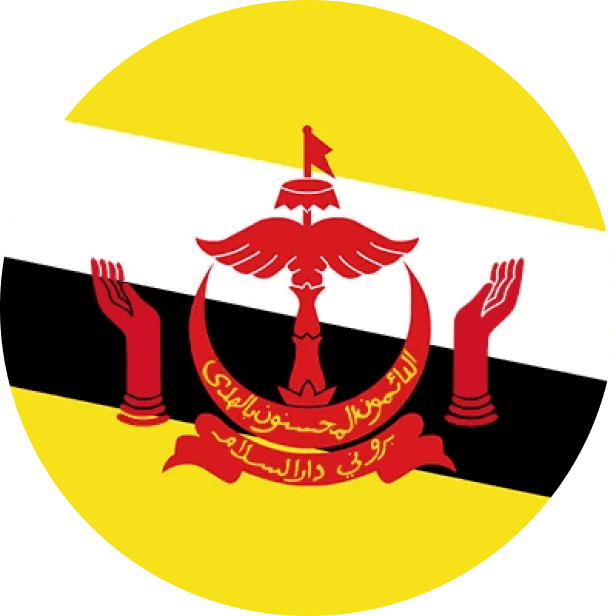People analytics has come a long way from when it first started in the 1900s. It has gone from just telling you what to do (prescriptive analytics) to predicting what might happen (predictive analytics). This helps organizations be ready for changes and be proactive instead of being reactive. From basic to high-tech, people analytics has evolved dramatically. Today, it's supercharged with technologies like AI, data visualization, and complex data science. It has transformed from a rearview mirror into a proactive roadmap, enhancing businesses in today's dynamic work environment.
What is people analytics?
People analytics, also known as talent or HR analytics, is a data-driven strategy to improve various aspects of work and foster sustainable business success. Gathering and evaluating people analytics enhances decision-making through data analysis techniques.
In today's workplace, we have the tools to make wiser, more strategic decisions about talent across the entire employee experience. Whether it's enhancing our hiring process by pinpointing the best-fit candidates, revamping performance management through data-driven insights, or bolstering employee retention by understanding what makes them stick around, it's all within reach.
What are the benefits of People analytics?
People analytics causes associations to make more astute, progressively vital and increasingly educated ability choices. Here are its few benefits:
1. Smarter talent decisions
People analytics enables organizations to make more intelligent and strategic talent decisions.
2. Better candidate selection
It helps in identifying and selecting better candidates during the recruitment process.
3. Enhanced hiring decisions
Organizations can make more informed and effective hiring decisions.
4. Improved employee performance
By analyzing data, organizations can enhance employee performance.
5. Increased employee retention
People analytics assists in understanding factors that contribute to employee retention, reducing turnover.
6. Efficient talent management
It applies sophisticated data science and machine learning for more efficient talent management.
7. Comprehensive talent data
It provides options to view, understand, and act on talent data across the entire employee lifecycle.
8. Data visualization
Interactive data visualization tools offer deeper insights about the workforce.
9. Workforce planning:
Intuitive workforce planning applications help create, manage, and execute accurate hiring plans over multiple time horizons.
10. Predictive and prescriptive insights:
Insights offer predictive and prescriptive analytics, equipping business leaders with intelligence to improve recruitment, training, management, and development of their workforce.
The process of people analytics
People analytics today is a lot more intuitive and predictive. With that expectation to live up to, the process involves the following steps.
.png)
Step 1: Dig data that matters
The core question to ask here is, “What data is relevant to our business goals?”
and to set the key performance indicators (KPIs) accordingly. This allows you to save major resources by only investigating areas that need direct monitoring, such as operational tasks within the people management spectrum, and can lead to tangible business success.
If it does not add strategic value, digging that data could be a waste of time. Knowing what to focus on also helps in applying the right statistics, data mining, machine learning, survey management, and strategic workforce management tools.
Step 2: Experiment, explore, enrich
In a crowded and visibly fragmented market, it is imperative to choose a people analytics tool by exploring the market, experimenting with different options, and analyzing which option would enrich the organization the most. Multiple offerings include data mining, data transformation, and data visualization techniques, all merged into a user-friendly self-service interface.
Platforms that offer a wide range of features often require a lot of manual manipulation to access important data, and these aspects can be tested only through systematic experimentation.
Step 3: Have an action plan ready
Once you know what your end goal is, which data is relevant, and what the available options are (based on clear pros vs. cons analysis), create an action plan. Applying big data and predictive analytics to talent management, leadership development, and organizational capabilities often helps in fine-tuning the action plan.
Moreover, having a well-defined plan of action enables a better understanding of why certain changes may be taking place and where the organization is headed and can thus help garner more stakeholder support.
Step 4: Avoid legal loopholes
Ensuring that legal compliance is maintained in the collection of all data is crucial. Before you start on the analytics project, have a legal team validate the data sourcing techniques and processes. It does not end here.
Once the raw data has been gathered and treated, the results gleaned need to be approved as well before they can be applied or published. In our digital ecosystem, with data protection and privacy laws still evolving, it is prudent to keep abreast of the changes and double-check on legal compliance.
Step 5: Create leaner systems
Irrespective of the complexity of the project at hand, the broader strategy that the processes must adhere to needs to be simple and lean. The basic process of data analysis and interpretation should allow for easy application, updating, and readability.
For example, create the basic outline simplified as intake and design (data collection and the design of the analysis), data cleaning (removing irrelevant or unreliable data), data analysis (quantitative and qualitative exploration), and sharing insights (interpretation and presentation of the data). This can help avoid unnecessary complications such as confusion about the flow of steps involved, time wastage, or repetition of sub-processes that occur with unstandardized process structures, while still allowing room for tweaks where necessary.
The idea is to find the right balance between the limited moving parts (people and the dynamism of the environment) and fluid, customizable systems and processes of people analytics. When you have the right team with the relevant skillset in place, it is easier to streamline the whole process and apply quality controls.
Step 6: Build a fact-based, measurable HR business strategy
A realistic HR business strategy avoids functional silos and can align talent to business seamlessly. Having clear KPIs and ROI expectations from people analytics endeavors ensures that the impact is measured often and with transparency. A winning strategy needs to be backed by data and an effective plan of action.
Step 7: Take tech support
Technology is interspersed with every aspect of life today and more so with processes like people analytics, where often a bulk of analytical data is to be treated with little or no room for error. New-age HR tech tools make real-time data easily accessible. And this is an opportunity that needs to be milked because today, agility and real-time intelligence can truly set you apart from the competition.
Three key level-based checks to choose the right People Analytics Tools
With a vast array of available vendors, options, and subscription plans, choosing the right people analytics tools can often seem like a rather daunting task. Here’s a three-level need-based check to make the right decision.
Level 1: A working HR dashboard
To get started with people analytics, use a basic dashboard that allows you to capture, aggregate, and visualize data.
Tools like Power BI, Tableau, and Qlik allow ease of use and ease of data access. With a level 1 requirement, your priority should be to keep your people analytics system as simple as possible.
Level 2: An insightful HR dashboard
You may have a steady dose of relevant data and need basic insights to analyze better and make stronger decisions. Statistical tools like Excel or SPSS are effective as well, though they may not come with quirky visual aids and social-media style interfaces. Tools like Visier, while taking some time to be set up, come with holistic analytics solutions.
Level 3: A predictive HR dashboard
Your organization is at the third requirement level when you seek not only to analyze data but also to make intuitive predictions based on upcoming trends. These tools help you study behavior in a way that you can predict the next course of action.
For example, there might be some correlation between your employees updating their LinkedIn page, taking frequent leaves, and with them not being very content at work. While this is a very simplistic situation, predictive tools could help you make connections with behavior and decision patterns that you might have missed otherwise.
What is the role of HR in people analytics?
HR's role in people analytics includes utilizing data and insights to better understand various aspects of the employee experience. Here's a breakdown of its key responsibilities:
1. Data collection: HR collects a wealth of data, from the recruitment process to on-the-job performance, and even employee satisfaction surveys.
2. Data analysis: They analyze this data to identify trends and patterns, helping them understand what's working well and where improvements are needed.
3. Talent acquisition: People analytics assists in finding the right talent by analyzing past hiring data to identify the most successful recruitment strategies.
4. Performance management: It helps in evaluating employee performance, identifying top performers, and addressing areas for improvement, all based on data-driven insights.
5. Employee engagement: HR uses data to gauge employee satisfaction and engagement, enabling them to take actions to improve workplace happiness.
6. Predictive insights: People analytics can provide predictive insights, helping HR be proactive in addressing issues before they escalate.














































